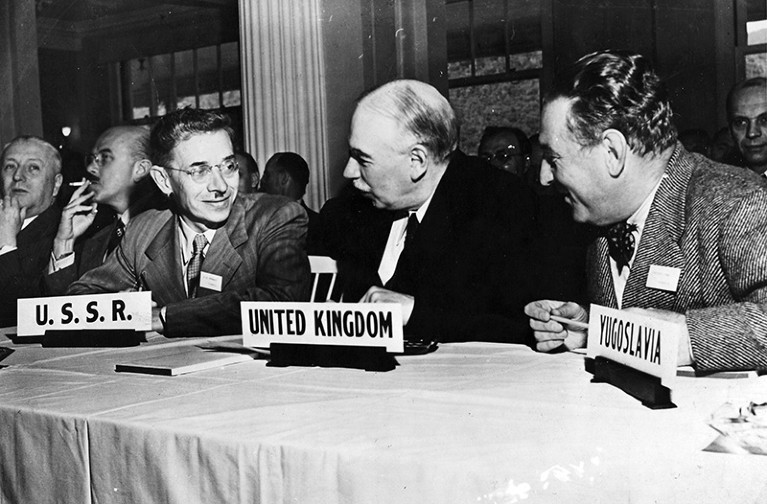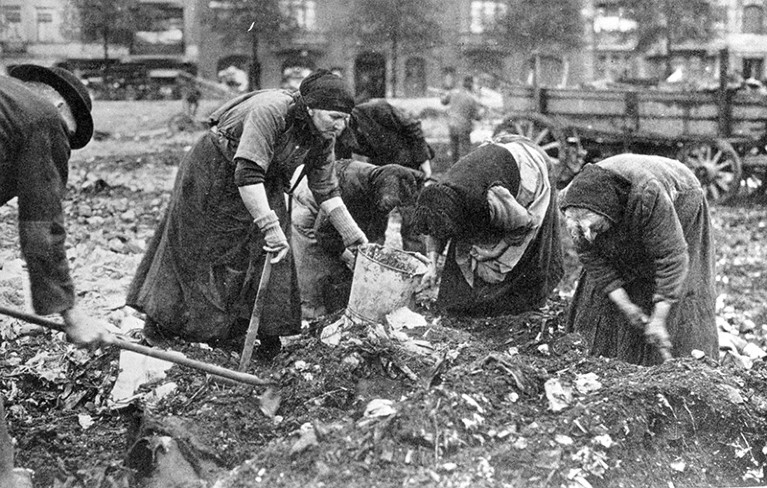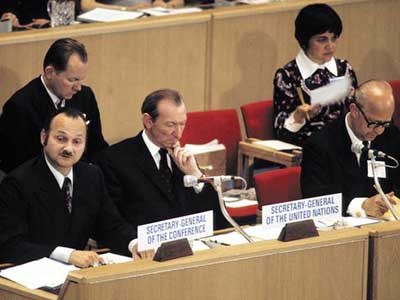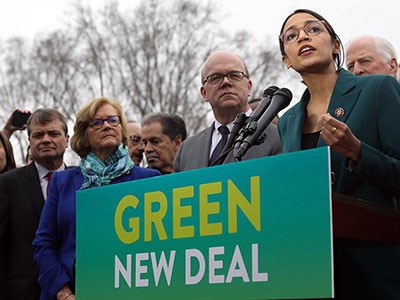- Ann Pettifor is director of Policy Research in Macroeconomics (PRIME), a network of Keynesian economists. She is author of The Case for the Green New Deal, The Production of Money and The Coming First World Debt Crisis.
You can also search for this author in PubMed Google Scholar

The Economic Consequences of the Peace John Maynard Keynes Macmillan (2019)
In December 1919, John Maynard Keynes published a blistering attack on the Treaty of Versailles, signed in June that year. The treaty’s terms helped to end the First World War. Keynes’s The Economic Consequences of the Peace revealed how they would also pave the way to the Second.
Keynes, then at the start of his career in economics, had attended the Paris Peace Conference, where the treaty was drafted, as an adviser to the British government. He left in protest. His hastily penned book was, and remains, a publishing phenomenon. Just a year later, The Economic Consequences of the Peace had been translated into 12 languages, and 100,000 copies sold worldwide. By the 1930s, Keynes had become one of the most influential economists in history. His book has never been out of print.

How to retool our concept of value
No wonder. This is a bold, eloquent work unafraid of the long view. It contributed to the economic stability of the mid-twentieth century. And in a world still grappling with the socio-economic and environmental costs of globalization, Keynes’s critiques — not least of the era’s international financial system, the gold standard — remain powerfully germane.
Keynes censures the disregard of world leaders for the “starving and disintegrating” people of war-torn Europe. “The future life of Europe was not their concern; its means of livelihood was not their anxiety,” he wrote. Keynes, however, was concerned for Europe’s future. His book’s significance lies in his revolutionary plan for financing recovery not just in Europe, but across the world.
Keynes called for a new international economic order to replace the gold standard, which had held from the 1870s until the start of the war. That system had led to a form of globalization that benefited the wealthy, but impoverished the majority and ultimately destabilized both the financial and political systems. Keynes’s plan (the Scheme for the Rehabilitation of European Credit and for Financing Relief and Reconstruction) is outlined briefly in a single chapter of the book.

The architecture of inequality
The phenomenal power of The Economic Consequences of the Peace is thus very much down to the prescience and originality of Keynes’s economic commentary, statistical analysis and radical monetary theory. But character assassination is also part of the mix. The bitterness so evident on the page stems in part from US president Woodrow Wilson’s airy dismissal of Keynes’s proposals at the conference. The deliberations at Versailles had also inflamed Keynes’s animosity towards the British prime minister, David Lloyd George, and French premier Georges Clemenceau. Keynes wrote of Clemenceau, for instance, that he was “dry in soul and empty of hope”. Inclined to judge people by their hands and fingernails, Keynes several times hinted darkly that throughout the negotiations, Clemenceau’s “grey-gloved hands” were “never uncovered”. These personal attacks give the book a vindictive tone, which some say he came to regret.
Prescient outlook
For a book published 100 years ago, the contemporary resonance is unsettling. Keynes writes: “England still stands outside Europe. Europe’s voiceless tremors do not reach her … But Europe is solid with herself.” In another passage, he notes that the “principle of accumulation based on inequality was a vital part of the pre-war order of society”. And in an era innocent of Amazon and containerized shipping, Keynes wrote that wealthy Londoners could order by telephone “the various products of the whole earth” and expect “their early delivery” to their doorstep. The globalized pre-First World War economy was the template for the modern one.

Driven as it was by the international financial sector, the consequences of this economic system were predictable: rising inequality, economic instability, political volatility and war. Thus, a bankrupt Germany and its allies (the Central Powers) — all heavily indebted sovereign governments — were to endure increasingly frequent economic crises after 1919. Their creditors, the victorious Allied Powers, made no effort towards a sound and just resolution of these crises.
Keynes’s analysis of these catastrophic collapses, and his ‘remedies’, provide salutary lessons. Given the scale of current threats, it is instructive to examine the principles behind his scheme, which, despite rejection at Versailles, was to have such a tremendous impact.
Government bonds
The international financial framework Keynes proposed would be governed by public, not private, authority. The idea was revolutionary in that it overturned the existing system of economies, backed by gold and effectively governed by bankers, financiers and other actors in private financial markets. Keynes’s system would permit Germany to issue a bond of up to about £1 billion (US$1.2 billion) in today’s values, to be guaranteed by Allied governments and used to raise finance for reparations, reconstruction and economic recovery. In time, the German and other Allied-backed bonds could be purchased by other governments and used as a new form of international currency — supported by sound Allied economies and managed by independent public authority.

GDP in the dock
Lloyd George and his treasury endorsed Keynes’s scheme at Versailles. Wilson’s rejection came in a forthright letter, as historian Eric Rauchway recounted in The Money Makers (2015). Wilson’s fear was that the United States — with the most robust economy — might be left to foot the bill for global recovery. And Keynes, in pleading his case at Versailles, had noted that that might have to happen. But the United States could afford to pay, he argued: it had not incurred foreign debts to finance the war. Indeed, it had profited immensely, thanks to Wall Street’s financing of belligerents, and the country’s export of munitions to warring Europeans. Furthermore, if the US economy was to remain buoyant, Keynes reasoned, it was crucial for US goods to find export markets, and for Europeans to be able to pay for them.
Wilson did not author his letter of rejection, Rauchway revealed. It was drafted by an adviser — Thomas W. Lamont, a partner in New York City banking firm J. P. Morgan and Co. The letter stresses “the desirability of post-war lending going through the usual private channels”: Wall Street. Lamont trashed Keynes’s proposal because it prioritized Allied-backed bonds over private bank bonds. J. P. Morgan had massively expanded foreign lending to governments during the war. Now, it could not risk repayment of those bonds being deferred, or subordinated to the repayment of sovereign bonds.
Because of Keynes’s defeat, the gold standard — representing private financial governance of markets in debt, exchange rates and interest rates — was restored. The consequences were as Keynes had predicted: periodic economic failures, political insurgencies and another war. World leaders opted for what Keynes called a “Carthaginian Peace”, designed to crush the Central Powers. It turned out to be a devastating Pyrrhic victory.
Golden age
Keynes’s scheme had a significant afterlife, however. In 1933, the newly elected US president, Franklin D. Roosevelt, resurrected it. On the night of his inauguration, Roosevelt began dismantling the gold standard as applied to the US economy, precipitating the collapse of the system worldwide. By acting on Keynes’s ideas through his New Deal reforms and programmes, the president freed his administration to invest in the economy, end the crisis of unemployment and tackle the ecological crisis of the day: the severe droughts of the Dust Bowl, afflicting states from Nebraska to Texas.

Radical reform and the Green New Deal
The Second World War interrupted progress. Near its end, in 1944, Roosevelt convened the United Nations Monetary and Financial Conference at Bretton Woods, New Hampshire, to regulate the post-war financial order. He invited Keynes, and barred bankers from attending. Keynes’s scheme was, in part, revived and adopted at Bretton Woods. His big idea — for an International Clearing Union independent of any one powerful state — was defeated. But his ideas did lead to the establishment of the International Monetary Fund and the International Bank for Reconstruction and Development (later part of the World Bank). The years that followed (from 1945 to the early 1970s) became, for economists of all orientations, a golden age.
Despite the adoption of some of Keynes’s radical monetary theory and policies at Bretton Woods, by the 1960s private financial interests were chipping away at them. Gradually, financial deregulation, privatization and globalization were restored. Today, we are witnessing the aftershocks: massive inflations of credit, debt deflations and periodic crises such as the meltdown of 2008. The expansion of credit has fuelled consumption and production worldwide, which in turn drives up greenhouse-gas emissions.
As in 1919, the world endures extraordinary levels of inequality, insecurity and volatility. Globalization has encouraged political insurgencies worldwide and fostered a growth model posing threats to the survival of Earth’s life-support systems.
Fortunately, Keynes’s classic study and monetary theories, and the resolute efforts of Roosevelt’s New Deal, have survived. They are embodied in the Green New Deal. The US policy platform, proposed this year by Democrats in Congress, is as global in scope as Keynes’s scheme and similarly aims to bring society through crisis. This time around, that crisis is the greatest security threat ever to face humanity: Earth-systems breakdown.
Nature 573, 492-494 (2019)